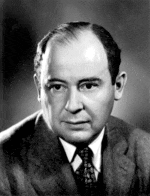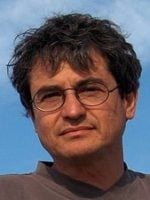It is related that on the day that Rabbi Yehuda HaNasi died, the Sages decreed a fast, and begged for divine mercy so that he would not die. And they said: Anyone who says that Rabbi Yehuda HaNasi has died will be stabbed with a sword. (Talmud, tr. Ketubot 104a)
We find an interesting example of the Wigner’s Friend paradox in the Gemara quoted above. The Gemara discusses the circumstances surrounding the death of Rabbi Yehuda HaNasi (Juda the Prince, knows simply as the Rebbi), one of the greatest sages of Israel, who compiled Oral Torah in the Mishnah. Why did the Sages issued a death threat to “anyone who says that Rabbi has died” promising that he “will be stabbed with a sword”?
The medieval Talmudist Rabbi Bezalel Ashkenazi (1520-1592), in his collection of glosses on the Talmud, explains:
The Rabbis wished to ensure that they would remain ignorant of Rebbi’s death. They knew that once they would learn of it, they would be compelled to cease praying for him, for it is not proper to pray for a person’s resurrection. If, however, they would remain ignorant, they could operate on the presumption that he is still alive, and continue to pray, in case their prayers may return him to life. They, therefore, forbade mention of his death. (Shitah Mekubetzet)[i]
The above commentary links the Talmudic narrative to the state of knowledge/ignorance of the Sages, which hints at the wave function collapse in quantum mechanics. According to the conscious collapse interpretation of quantum mechanics, the knowledge of the conscious observer collapses the wave function (or the state) of the system.
The quantum-mechanical analogy is also hinted at by the following story. When Rabbi Yehuda HaNasi died, no one had the heart to announce his death to the Sages, until Bar Ḳappara hinted at the said news in a parable:
The heavenly host and earth-born men held the tablets of the covenant; then the heavenly host was victorious and seized the tablets.” (Jerusalem Talmud tr. Kilayim 32b, tr. Ketuvot 35a; Ketuvot 104a; Ecclesiastes Rabbah 7:11, 9:10).
The allegory of angels and men holding on to the same tablets of the covenant (a euphemism for the Rebbi), hints at the superposition of the two states: live (the Rebbi in the earthly domain of men) and dead (the Rebbi is in the domain of angels, i.e., in heaven). Such superposition is uniquely quantum and was popularized by the Schrödinger Cat paradox.
The explanation offered in Shitah Mekubetzet, however, presents a difficulty. If someone has already observed the Rebbi dead, that person would have collapsed the Rebbi’s wave function. How would the prayers of the Sages stay effective, if the wave function was already collapsed? Moreover, how praying for the Rebbi’s recovery from illness (premised on him being alive) cause his resurrection after his passing? Any live person has a hazakah (presumption) of being alive. Praying for someone ill is praying for that person to continue to be alive, i.e., to continue his status quo as a living person. Based on the hazakah, maintaining the status quo does not require an open miracle. A resurrection, on the other hand, is the biggest miracle of all. How could the prayer to maintain the status quo of a live person cause an open miracle of his resurrection after dying? The death threat to kill anyone who says the Rebbi is dead may hint at the answer to these questions. Today, we might say it was a death threat to Wigner’s friend.

Wigner’s Friend Paradox is the next step in the development of the conscious collapse hypothesis proposed in 1932 by the Jewish-Hungarian polymath John von Neumann. Von Neumann reasoned that since any matter must obey the Schrödinger Equation, nothing material can cause the collapse of the wave function, which does not follow from the Schrödinger Equation. Thus, he reasoned, one human consciousness, which is the only none-material thing we are familiar with, could affect the collapse.

Von Newman’s friend, another Jewish ex-pat from Hungary, Eugene Wigner, who would receive the 1963 Nobel Prize in Physics for his contribution to the physics of elementary particles, took it a step further. In 1961, he asked a question, what happens if he left his laboratory, leaving his friend in the lab along with the Schrödinger cat in the box. While Wigner is away, his friend opens the box and learns the fate for the cat finding it either alive or dead. He dutifully writes his findings in the laboratory notebook. Wigner returns to his lab but does not ask his friend whether the cat is dead or alive. This thought experiment leads to a paradox: as far as Wigner’s friend is concerned, the wave function of the cat is collapsed, and the cat is in a definite state of either being alive or dead. As far as Wigner is concerned, however, the cat is still in the superposition of two states of being alive and being dead. Whose description of reality is correct?
One possible answer is that the first observer collapses the wave function, and his description of the reality is the only correct description. If that were the case, the Sages would have threatened with death anyone who went to check up on the Rebbi, because that first person to witness the Rebbi dead, would have collapsed the wave function irreversibly.

Other physicists, myself including, believe that both descriptions of reality are correct. According to some interpretations, such as QBism (by Christopher A. Fuchs), relational quantum mechanics (by Carlo Rovelli), and my Futurist Interpretation of Quantum Mechanics, superposition of states and collapse of the wave function are defined only relative to the overseer. Relative to the Wigner’s friend, the wave function is collapsed, and the cat is in a definite state of being either alive or dead. Relative to Wigner, the wave function was not collapsed, and the cat is still in the superposition of states of being alive and dead. (For a more detailed discussion, see my essay Wigner’s Friend Paradox)

Apparently, the Talmudic Sages shared this interpretation of the Wigner’s Friend paradox based on the relativistic (not is a sense of special theory of relativity but in a broader sense of viewing reality as being relative to an observer) understanding of the wave function collapse. They did not worry about the first witness observing the Rebbi deceased, in which case, ignorant of this knowledge, they could have continued praying for his recovery. Since, as far as the Sages where concerned, the Rebbi was still presumed alive based on the hazakah, their prayer did not require an open miracle of the resurrection of the dead. Only, if the fact of the Rebbi’s demise were to be announced, his state would have become definite for them as well, precluding them from continuing to pray—prayer for a recovery of a deceased person is an oxymoron.[ii]
As I discussed in Wigner’s Friend Paradox with respect to Rabbi Akiva’s opinion in Mishnah, our Sages held that the collapse of the wave function is relative to the observer. The Gemara in Ketubot is another example of the epistemic (rather than ontic) approach where the knowledge (or ignorance) of the agent plays the key role. This approach is at the core of Quantum Bayesianism (or QBism, as Christopher Fuchs calls it) interpretation of quantum mechanics. It is also an example of relativistic (or relational, as Carlo Rovelli calls it) approach to quantum mechanics, as evidenced by the death threat to the Wigner’s friend issued by the Sage.
Endnotes
[i] I am grateful to my son-in-law Maimon Kirschenbaum for bringing this Shitah Mekubetzet to my attention.
[ii] For those familiar with quantum mechanics, here is the mathematical treatment of my explanation of this Gemara:
The Rebbi’s state forms a two-dimensional Gilbert space, where the system R can have two states |live〉R and |dead〉R or |1〉R and |0〉R respectively. Such space in quantum mechanics is called the spin space. Until an observer witnessed the death of the Rebbi, his state was a superposition of states |live〉R and |dead〉R:
L |1〉R + d |0〉R
When an observer (playing the role of the Wigner’s friend) measures the Rebbi’s state in the basis {|1〉R, |0〉R} and finds him dead, the probabilities collapse as follows: |l|2=0 and |d|2=1. From the vantage point of the first observer (the Wigner’s friend), the Rebbi’s state collapsed into one of the eigenvalues: 0 or 1. If the observer found the Rebbi dead, the eigenvalue of the Rebbe’s state in this basis is 0 and the state is |0〉R.
From the Sages (or Wigner’s) point of view, so long as they don’t know the results of the observation by the first observer, the system is a combination of the Rebbi R together with the observer (Wigner’s friend) F, which is described by the tensor product R ⊗ F. The state vector of such combined system is give as:
l (|1〉R ⊗ |1〉F) + d (|0〉R ⊗ |0〉F),
where |1〉F is the state of the friend, if he finds the Rebbi alive, and |0〉F is the state of the friend if he finds the Rebbi dead. This is the state of superposition of the Rebbi being alive and the Rebbi not being alive that exists from the vantage point of the Sages. This state of superposition is what would allow the Sages to continue praying that the state is collapsed in its eigenvalue |1〉R, i.e, |live〉R.
Dear Dr. Alexander Poltorak,
My name Shemer (Shmariahu) Keydar. I enjoy to read your posts very much. Also I am interested to find amazing parallel between modern physics and Kabbala /Hassidut.
Forty years ago, as a student of theoretical physics, I was exposed
for the first time to quantum mechanics . During the period that I was studying physics, I became interested in the study of Kabbala and Hassidut. I immediately saw an amazing parallel between the two and began to publish short articles on the subject.
Recently I have publish a book that is available on Amazon. “From Adam’s Apple
to Newton’s Apple. Concepts in Kabbala and the Wisdom of Hassidut
through the Lens of Modern Physics”. If you wish I can send you a copy of the book.
Bsurot Tovot. BeBraha
Shmariahu
May be in order to cause the wave function to collapse, there is a need for two kosher witnesses? The uniqueness of the reality is necessary only for the sake that two pairs of kosher witnesses will not contradict one another